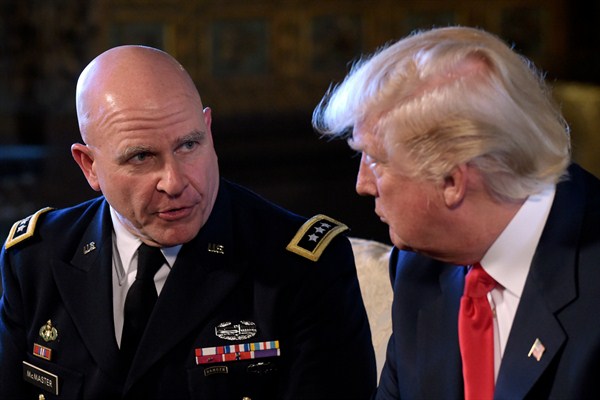The composition of a U.S. president’s national security team is always important, but it is particularly so for Donald Trump. Most recent U.S. presidents took office with some experience at policymaking and international affairs, and with ties to their party’s foreign and national security policy experts. Trump did not.
This is one reason that getting his people in place is taking so long. Of the 549 senior government positions that require Senate confirmation, 14 of Trump’s nominees have been confirmed, and 20 are awaiting confirmation. No one has yet been named for the remaining 515 slots.
That said, Trump did fill what may be the most important job of all this week when he announced that U.S. Army Lt. Gen. H.R. McMaster would replace Michael Flynn as assistant to the president for national security affairs, commonly known as the national security adviser. This position has existed since the 1950s and has been held by important, sometimes towering figures like Henry Kissinger, Zbigniew Brzezinski, Colin Powell and Brent Scowcroft. Its exact function varies according to the needs of different presidents. Kissinger and Brzezinski were America’s chief strategists, placing their stamp on the foreign and national security policies of the administrations they served. Other national security advisers like Powell and Scowcroft were not advocates of particular policies or postures, so much as integrators who made sure that the agencies of U.S. government worked together and implemented the decisions made by the president.

